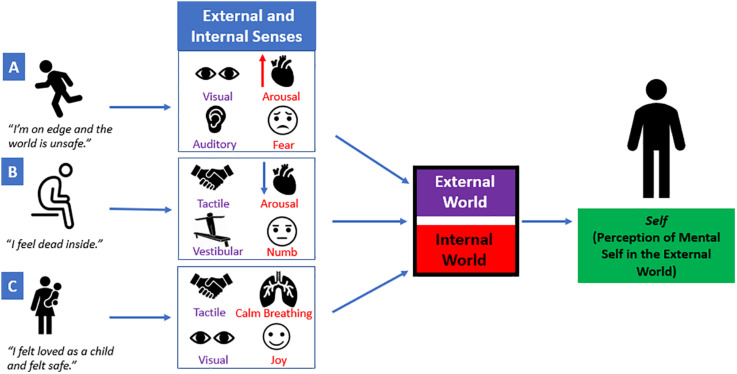FIGURE 2.
A single sensory experience is a combination of external and internal sensory information. Multiple sources of raw sensory information from an individual’s internal and external worlds are combined to develop a unified coherent perception of a sensory experience. However, extreme fluctuations in arousal can elicit internal affective sensations that may have negative cascading effects on how sensory stimuli from the external world are perceived. (A) “I’m on edge and the world is unsafe.” If an individual feels on edge or unsafe, he/she may be hypersensitive to visual and auditory sensations (e.g., a sudden movement or a loud noise). Simultaneously, this may elicit an increase in arousal and may perpetuate fear-based emotions. (B) “I feel dead inside.” If an individual feels dead inside, decreased arousal and emotionally numb affective sensations may cause an individual to feel withdrawn from his/her surroundings. This may compromise the ability to self-locate his/herself in space using vestibular and/or tactile input. (C) “I felt loved as a child and felt safe.” If an individual has a secure parental attachment, this may allow the child/parent to communicate with each other through tactile and visual external sensory information. This may facilitate attuned calm breathing between the child/parent and can be accompanied by joyful emotions. Taken together, each sensory experience contains various sources of sensory input that contribute to the perception of one’s own mental self in the external world.

